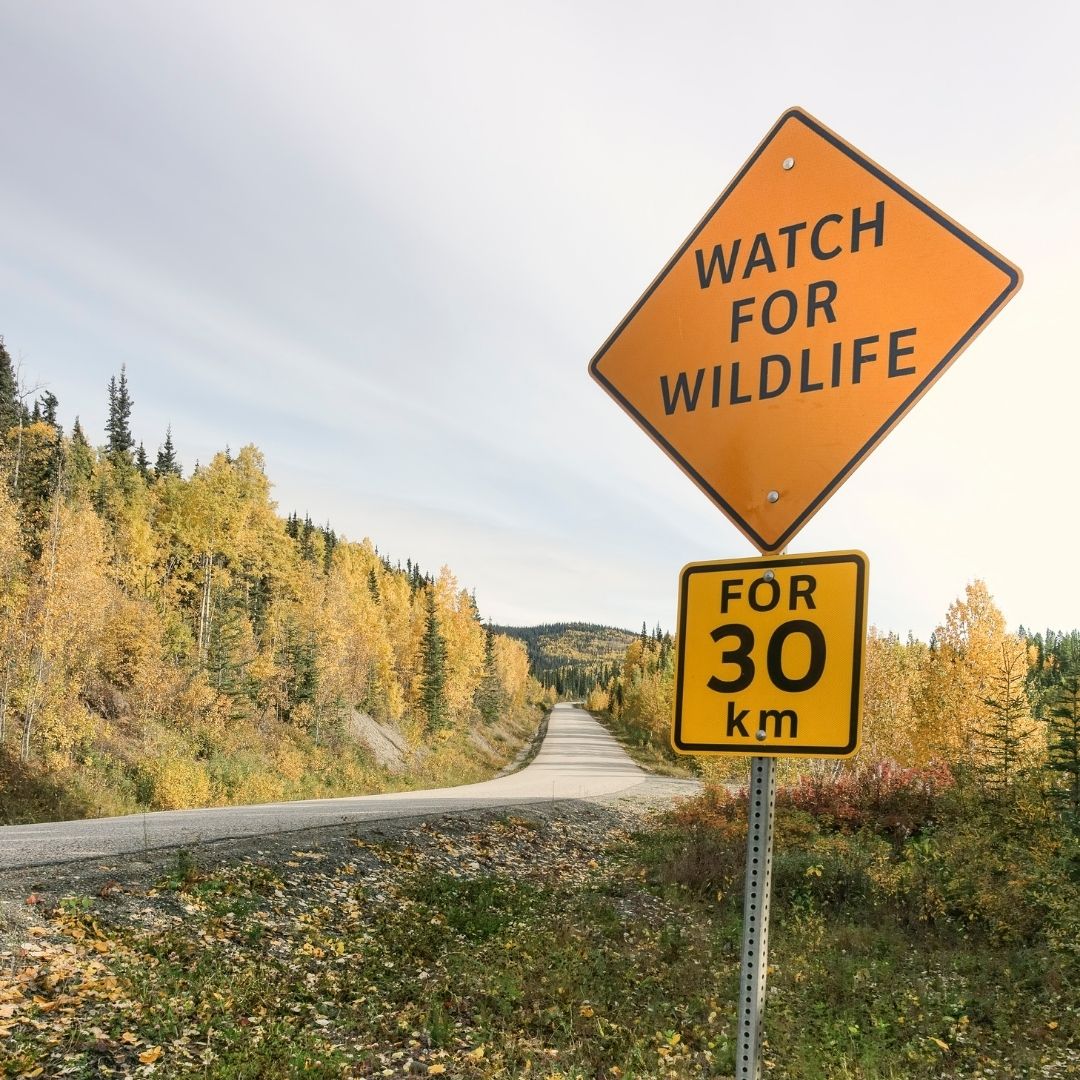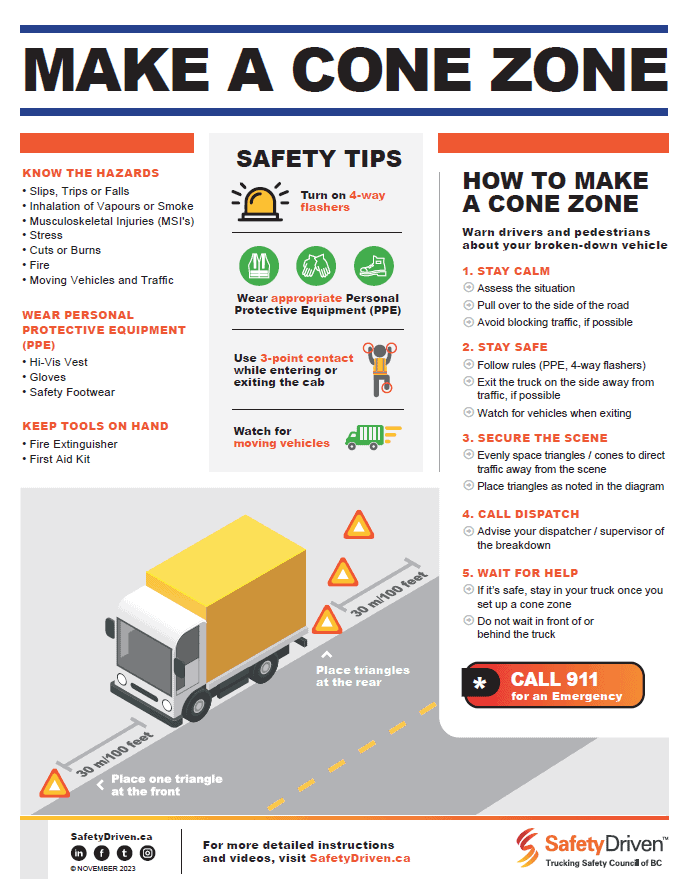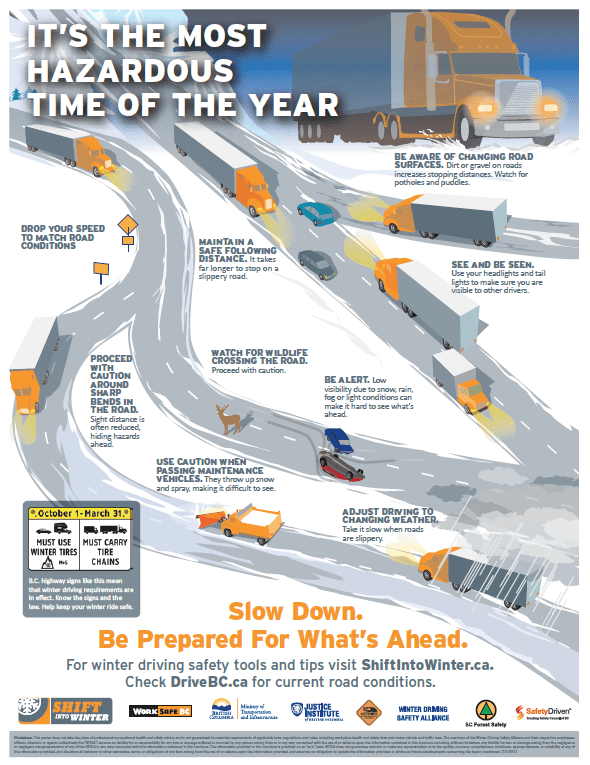
Driving strategies that can make a difference between miss and a new front end.
As Spring approaches, the frequency of wildlife encounters along our highways will increase.
Whether it is a bear, lynx, deer, elk or moose, most commercial drivers have experienced a close call with wildlife. It is generally accepted that collisions with wildlife are non-preventable, that drivers could not have done anything to avoid colliding with the animal. However, taking this approach for every wildlife collision eliminates the opportunity to determine if the driver could have taken steps to safely avoid impact. Organizations can educate their drivers on strategies that could be used to make the difference between a close call and the need for a new bumper, grill or radiator.
Did you know?
- Moonlit nights encourage movement. If it is a clear night or slightly overcast, wildlife will be more prone to be on the move
- Animals prefer to move at dawn and dusk. This is when the hazard is greatest for encountering wildlife and, due to glare from the sun, when drivers’ vision is somewhat impaired
- Greenery attracts animals to the roadside. Lush areas that are fed by streams are particularly enticing
- Trees near the roadside encourage crossing. Trees provide some shelter from predators and obviously obscure wildlife from drivers. Outcroppings of trees close to highways where fencing is not provided, should be noted
- Spring brings young animals to the roadside. The young are not “street-smart” and will take risks that their parents might not contemplate
- Rutting is a ritual of deer, elk and moose where they charge and interlock antlers during the mating season. In the Fall, these animals may charge a vehicle they mistake for a foe
Here are some tips:
- Look for posted signs warning of wildlife in the area. Like all warning signs, there is a history behind why these signs are posted in specific locations. While wildlife will migrate around areas and outside of a known radius, as noted above, they tend to have favourite spots where food or water sources are plentiful
- Avoid distractions. Focus on the ART of driving. A momentary lapse in concentration may be the difference between seeing an animal and taking appropriate steps to avoid contact or being surprised and colliding with it
- Maintain correct eye position and scan the horizon as far as possible down the road, watching for slight movement or areas where one would suspect wildlife might be. Read the landscape!
- Remember high-risk times of day or months when wildlife encounters are more likely
- Slow down and drive to conditions. A reduction in speed as little as 5 kph could make a world of difference
- Have a plan. Dependent on the landscape (e.g. ditch, flat area, embankment), think about your likely course of action prior to being forced to make a snap decision should you encounter wildlife
- If you see one animal, scan for others
- If a collision is imminent, look at the path you want to take, not the animal. Your vehicle will go where you are looking
Don’t overdrive your headlights!
Your headlights, whether low or high beam, illuminate a portion of the road in front of your vehicle and allow you to see a set distance in front of you and, to a lesser extent, to the side. The average driver takes 1.5 seconds to see a hazard, like an animal, and to react to the hazard in some way. In that 1.5 seconds, a vehicle traveling at 90 kph will travel 37.5 meters. It will take a well-maintained air brake equipped commercial vehicle about 64 more meters to come to a complete stop once the brakes have been applied. If your headlights allow you to see 107 meters down the road, at 90 kph your vehicle will take over 111 meters to stop. At that speed, you cannot see far enough down the road to avoid colliding with the animal if it remains on the roadway. Reducing your speed by as little as 5 kph will improve your odds greatly!
Remember: Many wildlife collisions are preventable. Do not assume otherwise!
About Shaun Garvey
A designated Canadian Risk Manager since 1994, Shaun has an intimate working knowledge of fleet risk management and regulatory compliance. He brings diverse industry expertise to his approach to safety, compliance and training which he delivers with a personal style and real world examples. Shaun co-founded Advantage Fleet Services Inc. in 2001. He has a driving passion to make workplaces safer for everyone, including those working on the roads across North America.
Latest Resources
Make a Cone Zone
Dowload this poster for tips on how to make a safe cone zone.Winter Hazards Poster
Drivers need to recognize winter hazards. Share this poster to remind drivers how to ...

